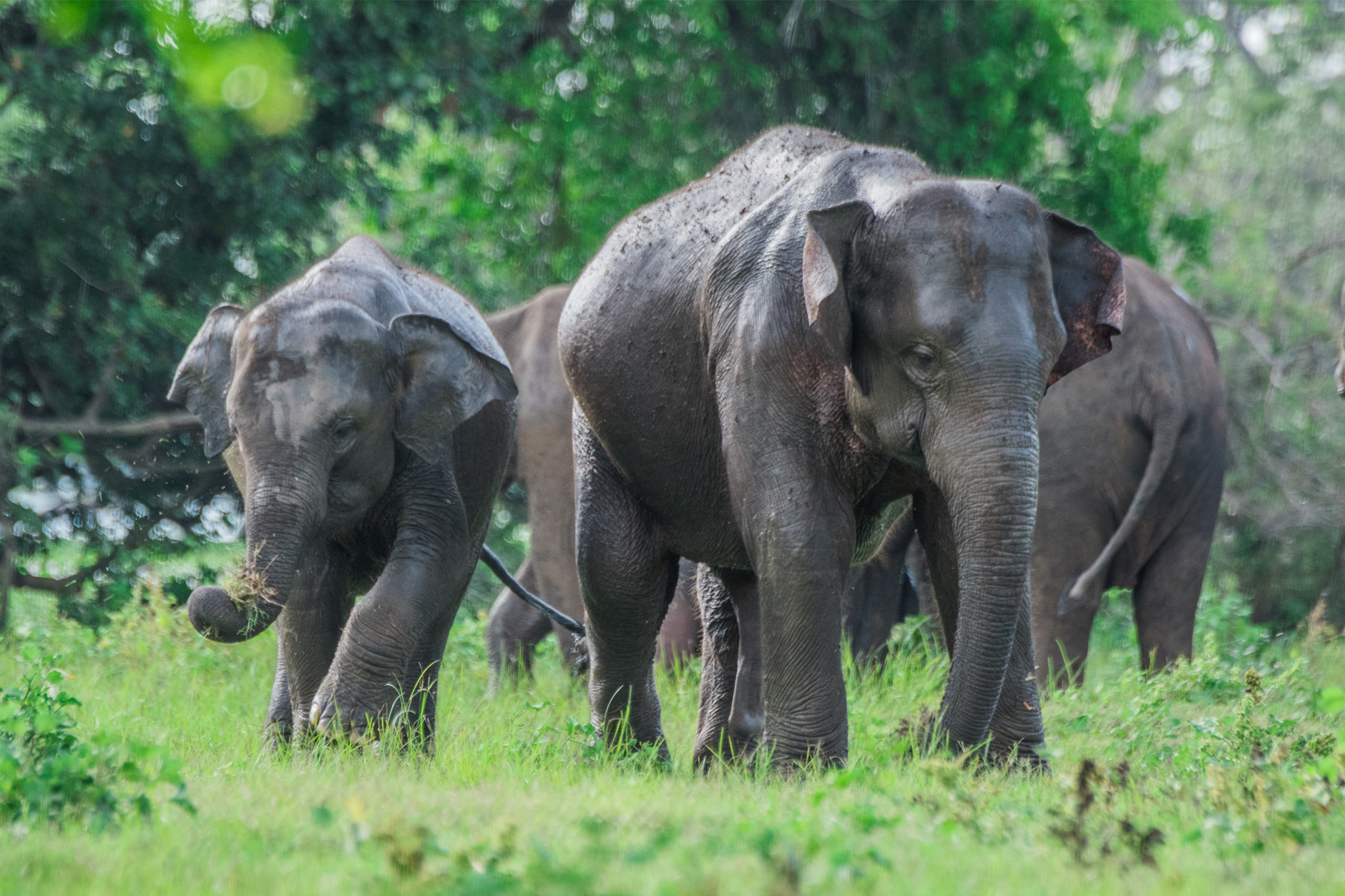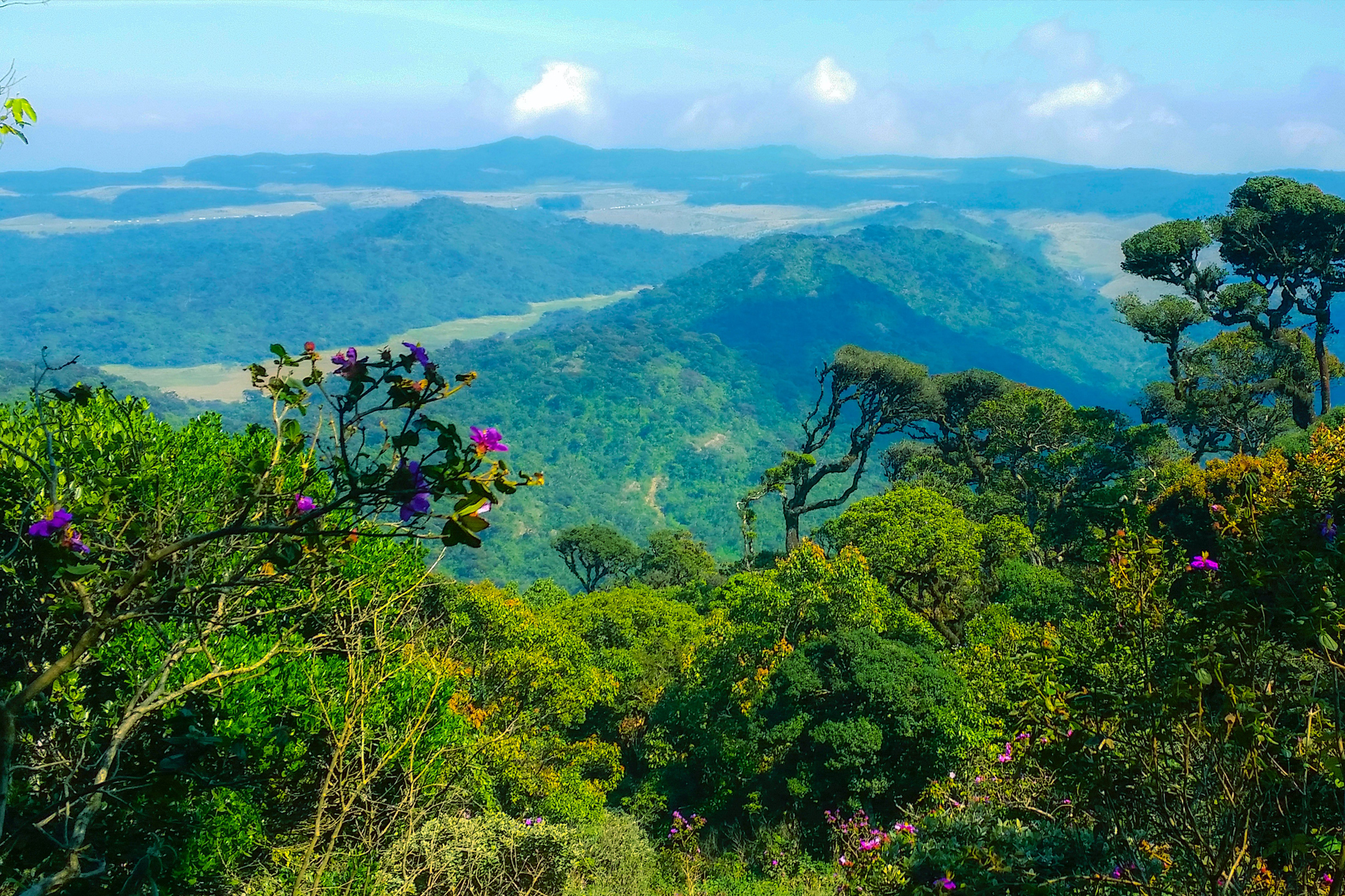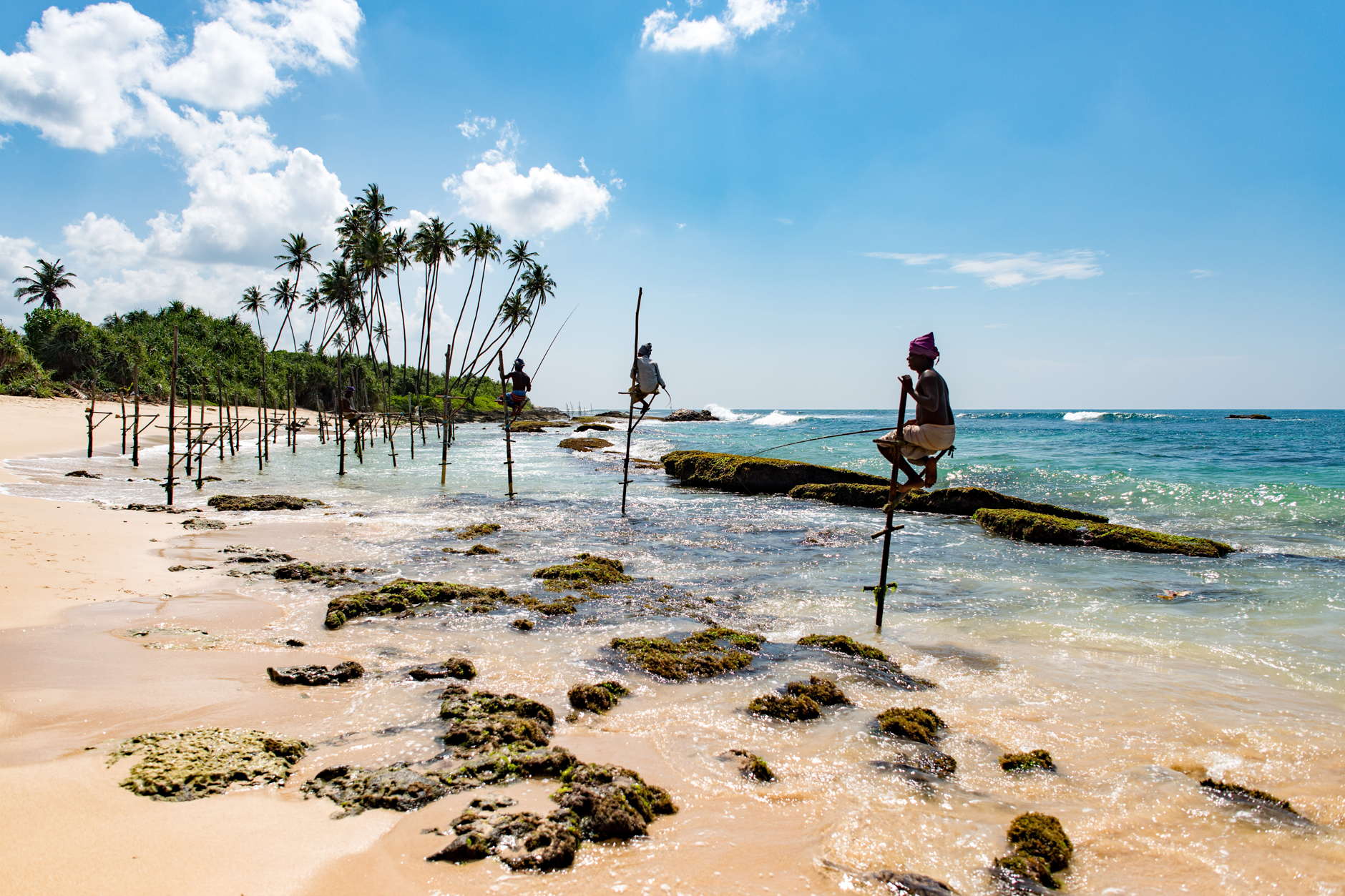












“Ayubowan” & ‘’Vanakkam’’ Welcome to a tropical paradise. You will be welcomed & greeted by your guide or our representative on arrival at the Waiting Area at Colombo International Airport. After that, You will travel to Sigiriya .
Rest of the day you can relax & enjoy.
Image by Dylan Shaw on Unsplash

Sigiriya is a UNESCO World Heritage site that is proposed to be the 8th wonder of the World. Sigiriya, a massive rock in the green scrub jungle, is perhaps the most memorable place for visitors to Sri Lanka. The site was known from ancient times as a hermitage for Buddhist monks. A well-planned monastic complex included caved temples, bathing pools, lovely ponds, and Asia's oldest surviving landscaped gardens. The "Lion stairway", the "mirror wall" and the "water gardens" are its other highlights. The ruins of the capital built by the parricidal King Kashyapa I (477–95) lie on the steep slopes and at the summit of a granite peak standing some 370 m high (the 'Lion's Rock', which dominates the jungle from all sides).
Afterward evening you can enjoy a Jeep Safari at Minneriya National Park (Duration – 2 hours). It’s on the banks of the Minneriya reservoir, which was built in the 4th century A.C. Minneriya is a hide-out for many elephants, where you could see herds of elephants approximately 50 to 60 elephants in a herd. Here from July to September one of the World’s top ten wildlife spectacles take place known as ‘The Gathering’, more than 250 elephants gather around the Minneriya water tank in search of water and food. Apart from elephants, it is a habitat for migrant and resident bird species like Grey herons, Open built storks, Painted storks …etc. And also, you could see 3 different species of monkeys Silica make, Pink faced leaf monkey and Grey Langer.
Rest of the day you can relax & enjoy.
Photo by Udara Karunarathna on Unsplash

After breakfast, you will start traveling to Kandy. In-route to Kandy you will visit the Dambulla Cave Temple.
Dambulla Golden Rock Cave Temple is a vast isolated rock mass 500ft high and 1.6 km around the base. Here is found the impressive Rock Temple dating to the First Century BC. The caves of Dambulla sheltered King Walagamba during his 14 years of exile from Anuradhapura. When he regained the throne, he built the most magnificent Rock Temples to be found on the Island. The complex consists of five caves with over 2000 sq. meters of painted walls and ceilings. It is the largest area of paintings found in the world. It is a UNESCO World Heritage site. In the first Cave is a recumbent image of the Buddha 14 meters long cut out of the Rock. There are images of deities associated with Buddhism all around. The frescoes on the ceiling date back to the 15th - 18th Centuries. In the Second Cave, the finest and the largest of all, there are 150 life-size statues of Gods from the Buddhist religion along with numerous images of the Buddha himself.
On the way to Kandy, you will see Spice Gardens between Dambulla and Kandy.
Spices have long been important in the commercial history of Sri Lanka. With so many spices and herbs growing on the island’s shores, it is unsurprising that they were used to barter and trade between the sea-faring merchants, and have been the main export of Sri Lanka down through the ages. For centuries indigenous herbs and spices have been used for both medicinal purposes and in traditional Sri Lankan cuisine. To visit a Spice Garden is to open up your senses to smells and tastes, old and new. Cinnamon, ginger, vanilla, and cardamom are just some of the spices available in the numerous Spice Gardens between Dambulla and Kandy.
Afterward, arrive in Kandy you will visit The Temple of the Tooth & Buddhist Museum, Sri Dalada Maligawa dates back to the 16th century, though most of the present buildings were built in the 19th century. Venerated as the most important object in the Buddhist world, the Sacred Relic of the Tooth of Buddha is enshrined at the Temple. Brought from India 2500 years ago, it is said that the possessor of the Relic had the right to rule the country. The Relic is kept in a gold casket and stored amidst great security in the Inner Chamber.
In the evening you will see Traditional Kandyan Dance – Kandy, Sri Lanka’s second-largest city is home to a Sinhalese cultural tradition of which Sri Lankans are justifiably proud. Rich in color and agile in their movements, the Kandyan Dancers evoke images of pageantry and traditions past. Lively and exuberant, spellbinding, and hypnotic, this Cultural Show is a spectacle to remember with its nimble dancers, energetic drummers, and fireproof firewalkers.
Image by Musthaq Nazeer from Pixabay

After breakfast, you will visit Peradeniya Botanical Garden. The botanical garden of Peradeniya, near Kandy, was first established in the 14th century. Since British times Peradeniya has become one of the finest botanical gardens in Asia. When the British eventually wrested control of the Kandyan Kingdom in 1815, the site at Peradeniya was a Royal Pleasure Garden, apparently being enjoyed by the last Queen of Kandy. In typical fashion, the British were quick to establish their own indelible stamp on this lush corner that exists in the cradle of a deep bend in the wide and languid river, the Mahaweli. Initially managed by Alexander Moon, the gardens started as little more than a coffee and cinnamon plantation. Today, spread over a sprawling 147 hectares, they are home to some 4,000 species from all corners of the earth. There is a pungent and fascinating spice garden that provides a fine introduction to the long-practiced medicinal science of Ayurveda and an exceptional orchid house sheltering some 300 varieties. A number of the wider pathways are tree-lined, including the classic “Avenue of Palms” which has the aesthetic power to transform a simple stroll into an event.
After that, you will travel to Nuwara Eliya. As the road winds through the hills, you will pass picturesque waterfalls, tumbling down hillsides, and vantage points, which afford views over a panorama of rugged hills stretching far into the distance. There are many viewpoints to stop by along the way.
Image by Ishan Kahapola Arachchi on Unsplash

After breakfast, you will experience the most breathtaking train journey for 2:50 hours. You will travel from Nanuoya to Ella through tea plantations and rolling hills on the Old Colonial train with a panoramic view. This train journey was recorded in the Guinness Books of Records as one of the world’s best scenic train journeys. Your guide will pick you up at the Ella Station and you will continue the tour.
After the Your guide will pick you in the station afterward you will visit Elephant Transit Home In-route to Yala. Elephant Transit Home (ETH), where the orphan wild elephants are treated, raised, and released back into the wild, also is located at Udawalawe. Visitors to this place can observe how the elephants are taken care of, twice a day. The total number of orphaned elephants exceeds 40, of which most of them are calves and juveniles. The animals become mature enough to live on their own and are released back into the wild. Park authorities keep constant vigilance on the newly released animals until they get used to the new life in the wild.
After that, you will travel to the hotel in Yala.
Photo by Yves Alarie on Unsplash

After early breakfast, you will join Jeep Safari in one of the best National parks in Asia for spotting elusive leopards. The Yala National Park is the best place on the planet for spotting and photographing leopards in the wild. The best times to spot these magnificent creatures roaming freely around the park are early mornings or in the evening. Estimates state that there are between 500 – 650 leopards living in Sri Lanka. The Sri Lankan Leopard is a recognized subspecies of the Indian Leopard and is the largest leopard living in Asia making this wildlife safari experience one that is not easily forgotten. Yala is home to 32 recorded species of mammals. You will be able to see these species sloth bear, leopard, elephant, Water buffalo, Wild boar, spotted deer, Sambar, and golden jackal. You will also be able to spot Mugger Crocodiles, Estuarine Crocodiles, and Common monitors. Other reptiles include Cobra and Russell’s viper.
Yala is abundant with birds of migratory and non-migratory birds. There are around 130 recorded species of birds in the National Park. The Peacock can be found in every corner of Yala. You will be able to see crested serpent eagles and white-bellied sea eagles. Also, water birds around the waters are Flamingo, Spoonbill, Painted storks, Pelican, rare black-necked Stork, Grey Heron, Purple Heron, Night Heron, and Darters.
After that, You will travel to Mirissa, along the way near the village of Weligama, where you can see the Stilt Fisherman. Weligama literally translated as ‘sandy village,’ Weligama has a long stretch of fine golden sand. Famous for its stilt fishermen, visitors can see this unique sight only in this part of Sri Lanka. No one knows where, or even when this form of fishing originated, but it is an old tradition that lives on in the modern world today. This centuries-old traditional method of fishing is one of the best sustainable practices to catch fish. The Stilt Fisherman spends 2-4 hours sitting on a thin plank, hoping to catch one or two fish for their family’s lunch or dinner.
Upon arrival at Mirissa Rest of the day, you can relax & enjoy.
Photo by Geoff Brooks on Unsplash

Early morning start to watch the Blue Whales; you’ll leave early morning around 06:00 am from your hotel to see the Blue Whales. Mirissa is the most reliable site in the world for seeing the difficult and desired Blue Whale. It may also be the best place for seeing Sperm Whales too. Blue whales are the largest animals ever lived on earth growing up to some 33 meters long, weighing up to some 150-180 metric tons. They live individually or in very small pods or groups and frequently swim in pairs. Large Baleen Whales and Toothed Whales also come within sight of the shore. The calm ocean is abundant with krill which Blue Whales feed. From December through to April; there is an outstanding window of opportunity for observing Blue Whales and Sperm Whales close to shore.
Afterward, you will travel to Galle.
After arrival at Galle Afterwards, you will visit the Dutch Fort. There are many boutique shops along the narrow streets of the Fort as well as antiques, art, and craft shops. Galle is situated in southern Sri Lanka. It is the best example of a fortified city built by Europeans in South and Southeast Asia, showing the interaction between European architectural styles and South Asian traditions. The Galle Fort is a UNESCO world heritage site and the largest remaining fortress in Asia built by European occupiers. Other prominent landmarks in Galle include the natural harbor, the National Maritime Museum, St. Mary's Cathedral founded by Jesuit priests, one of the main Shiva temples on the island. Galle offers a unique opportunity to create a visible demonstration of the conservation of its inheritance.
Afterward, you will travel to Bentota. Travel time is approximately 1 hour and 30 minutes depending on road traffic.
Photo by Daniel Klein on Unsplash

After breakfast, you will take a Boat Tour of the Madu River. You will explore this remote area and Cinnamon Islands. Madu Ganga or (Madu River) wetland spreads across 915 hectares, out of which 770 hectares are covered with water. Sail downstream for about a kilometer, the river opens its doors to 36 spectacular islands covering the rest 145 hectares.
The inhabitants of these islands are mostly traditional fishermen and to some extent, they are engaged in some traditional cottage industries such as producing peeled cinnamon and cinnamon oil.
After that, you will visit Turtle Hatchery- Kosgoda.
These turtle hatcheries were constructed to rescue and protect turtle eggs because of the rapidly declining numbers of marine turtles on Sri Lankan shores. There are five varieties of Sea Turtles found in Sri Lanka, namely Olive Ridley Turtle, Loggerhead Turtle, Green Turtle, Hawksbill Turtle, and Leatherhead Turtle. Marine turtle eggs are purchased from the fisherman and re-buried along the beach and left there for 48 days allowing the eggs ample time to hatch. Thereafter the baby turtles are collected from the beach and kept in tanks for 2-3 days and released into the ocean to fend off for themselves. The few female turtles that survive will return to their natal shores after ten years to lay their own eggs. Visitors to the hatchery could release baby turtles into the ocean at night if they wish to; they could also take a glimpse at the two very rare albino turtles that are kept at the sea turtle project for research.
Rest of the day you can relax & enjoy.
Image by tripadvisor

Shopping in Colombo city and travel to the airport.
**** End of the Tour ****

Travel has helped us to undestand the meaning of life and it has helped us become better people. Each time we travel, we see the world with new eyes.

Honeymoon Sri Lanka Tour offers some of Sri Lanka's romantic highlights of the countryside & a relaxing stay on the beach. In Sri Lanka, this tour covers heritage, culture, food, nature, and wildlife. You will have your...
Read More

Hill country of Sri Lanka Tour offers some of Sri Lanka's highlights, hill country & beach stay in relaxing. In Sri Lanka, this tour covers Culture, Heritage, Food, Nature, and Beaches. You will have your own personal co...
Read More

Tropical Discovery Sri Lanka Tour offers some of Sri Lanka's highlights, hill country & beach stay in relaxing. In Sri Lanka, this tour covers Culture, Heritage, Food, Nature, and Wildlife. You will have your own persona...
Read More
Copyright © Traveylo. All Rights Reserved.
Designed by Virtualpensar Pvt Ltd